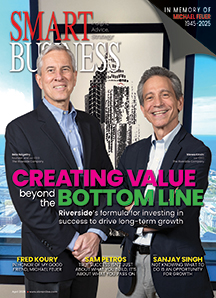The lending environment, with its rapid interest rate increases, is impacting commercial real estate.
For example, investors that were buying national and international product at lower cap rates — large, international retailers, for instance —are seeing the impact of those rate change. Cap rates have adjusted in response to recent interest rate increases.
“The price of investment property is going down,” says Eliot Kijewski, SIOR, a principal at Cushman & Wakefield | CRESCO Real Estate. “It does not mean that your property lacks value, but buyers’ inability to access credit at the once-historically low interest rates is chilling the investment market.”
While the rise in interest rates is putting downward pressure on investors, it should not significantly affect the market for occupiers. Demand, particularly industrial need, is still close to all time high; the Northeast Ohio vacancy rate is hovering around 3 percent. So, while commercial real estate investors may need to be more strategic in this market, industrial users buying a building shouldn’t be deterred.
Smart Business spoke with Kijewski about the effect of interest rates on the commercial and industrial real estate markets and how buyers can navigate the headwinds.
How are interest rate increases affecting the industrial market?
There’s still high demand for industrial product. Companies continue to need space and are having a difficult time finding a location in the Northeast Ohio region that provides the right opportunity because the product that is available in the market often does not meet the specifications of modern businesses. Further, building owners might be more inclined to hold onto properties they once considered selling as they’re not as likely to get as high of a price as they might have two to three months ago.
Today’s interest rates increases are still an historic value. Industrial users should still be encouraged to purchase property.
Developers building on spec, however, will see interest rates influence their prospects. It could mean an increase the rent compared to what it was even three months ago. Developers are not only facing rapid interest rate increases, but continued supply chain issues, which continue to drive up prices.
What other factors are impacting the Northeast Ohio commercial real estate market right now?
Beyond interest rates, there are other significant challenges in the commercial development space that can be frustrating, especially for buyers. Supply chain constraints for materials and significant lead times for professional services, like environmental assessments, to complete permitting making it difficult to meet the expectations of buyers and sellers.
Financing timelines have expanded at the same time that market conditions are changing. It’s a troubling combination, as the cost of money can change between the time an offer is made and when a deal is closed. For buyers, it’s important that they stay engaged with their lenders and other professional service providers so that they can plan ahead and stay on schedule.
Not only is inventory in the industrial real estate market still tight, inquiries for commercial properties from buyers outside the region have increased. That’s likely because there are often better opportunities for a return on dollars spent in Northeast Ohio than other markets. Buyers should not only be paying close attention to the market and the changing conditions, but they should also have their team in place watching the market for the right opportunity so that everyone is ready to act when the right opportunity comes along. ●
INSIGHTS Real Estate is brought to you by Cushman & Wakefield | CRESCO Real Estate


